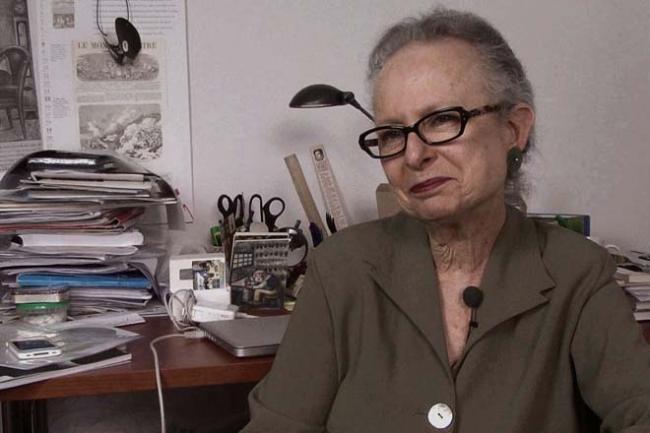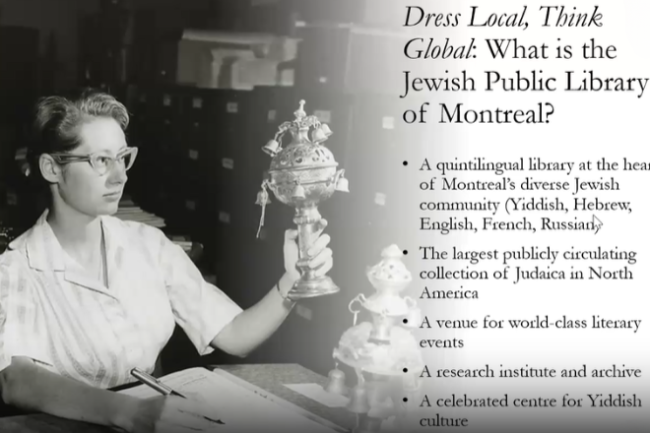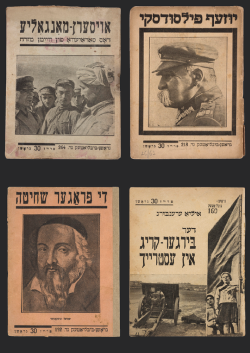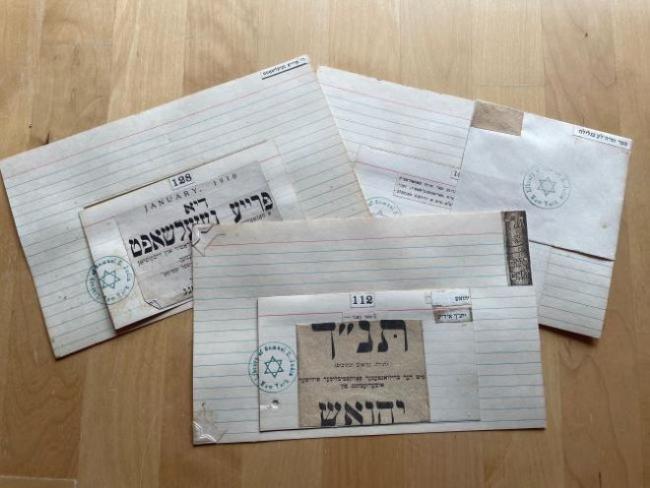Weekly Reader: The History of Yiddish Libraries
Guess what, library lovers? That’s right—February is National Library Lovers’ Month! At the Yiddish Book Center we are of course big fans of books and of all the libraries that make them available to readers. As you might have guessed, there is a rich history of Yiddish libraries, from scholarly and academic collections to grassroots efforts to collect and disseminate books to readers free of charge. Many of our donations come from libraries, and over the years we’ve helped enrich various collections with an assortment of Yiddish books. (In 2014 we were even awarded a National Medal for Museums and Libraries.) So in honor of libraries and those who love them, let’s take a look at the history of Yiddish libraries.
—Ezra Glinter, Senior Staff Writer and Editor
Building a Collection

If you were trying to assemble a Yiddish library from scratch, how would you do it? For a personal collection you might do what I (and others) do, and buy the books a few at a time off the shelves of the Yiddish Book Center. But if you’re trying to amass a larger-scale collection in a shorter amount of time, how would you go about it? In this oral history interview Barbara Kirshenblatt-Gimblett describes how she managed to put together a Yiddish library for the POLIN Museum of the History of Polish Jews in Warsaw.
Watch an oral history interview with Barbara Kirshenblatt-Gimblett
Culture and Community

One of the most important Yiddish libraries in North America has been the Montreal Jewish Public Library. Founded in 1914, the JPL has long been considered a major center of Yiddish culture, research, and community. In this presentation, Sebastian Schulman, Rivka Augenfeld, and Sonia Bloom explore the library’s history from its beginnings as a small immigrant-run educational initiative, to its role as the heart of Montreal’s distinctive and vibrant Yiddish cultural scene, to its present as a quintilingual institution and archive serving casual readers and serious scholars both locally and around the globe.
Watch a virtual public program about Montreal’s Jewish Public Library
Traces of the Past
Countless books donated to the Yiddish Book Center have passed through libraries and related organizations. While many of the libraries that once held Yiddish books no longer exist or no longer maintain Yiddish collections, these places are often documented in the books themselves. Nearly any given shelf at the Center contains a variety of spine labels, retro covers, and other library markings.
In for a Penny

A library can be a physical place that holds physical books, but it can also be a collection of texts collected or created to serve a particular purpose or audience. That’s the case with the Groshn-biblyotek, or Penny Library. Aimed at Yiddish-speaking workers in 1930s Poland, this ambitious venture ran for seven years and developed into an influential and popular library of Jewish and general knowledge.
Literary Plunder

As you might imagine, Yiddish libraries in Europe didn’t face a happy fate during the Holocaust. But that doesn’t mean that all the books were destroyed. In this podcast interview Yiddish Book Center President Aaron Lansky talks to Mark Glickman, author of Stolen Words: The Nazi Plunder of Jewish Books, which tells the story of how the world’s largest collection of Jewish books—some tens of millions—was looted by Nazi soldiers and others who removed them from private collections, libraries, and institutions.
Personal Holdings

Libraries are often public or communal institutions created to serve a community of readers. In both Europe and America political, religious, professional, and immigrant groups banded together to create libraries for their members—no one could afford to buy all the books themselves, but by pooling their resources the group could provide them to everyone. However, many individuals have assembled their own impressive collections and have even created card catalogs for them. In 1996, Claire F. Judin donated her father-in-law’s hand-made card catalog for his personal library, along with some of his books. The label affixed to the front of the box reads “Library of Samuel E. Judin, New York, organized January 1st, 1911.”
